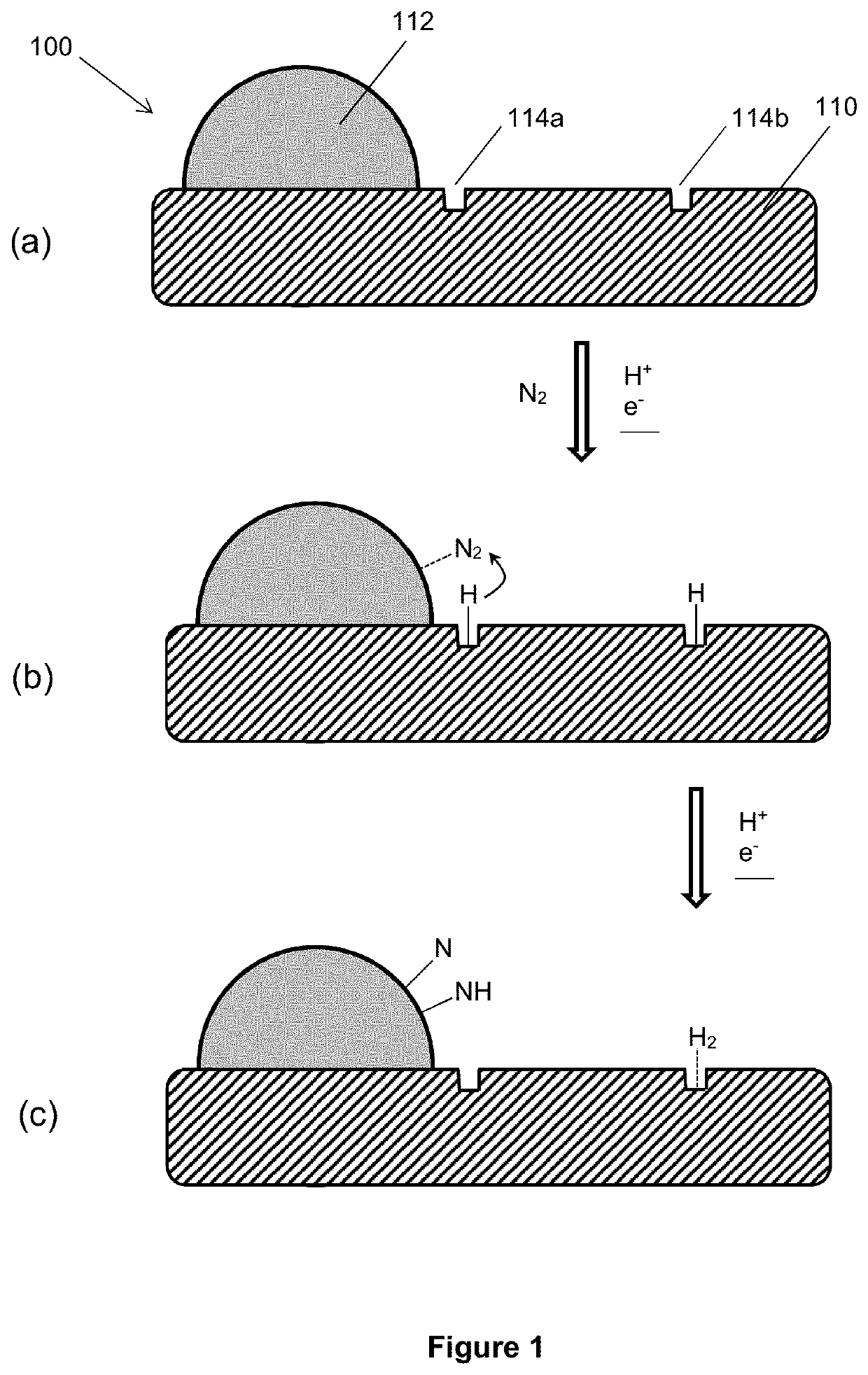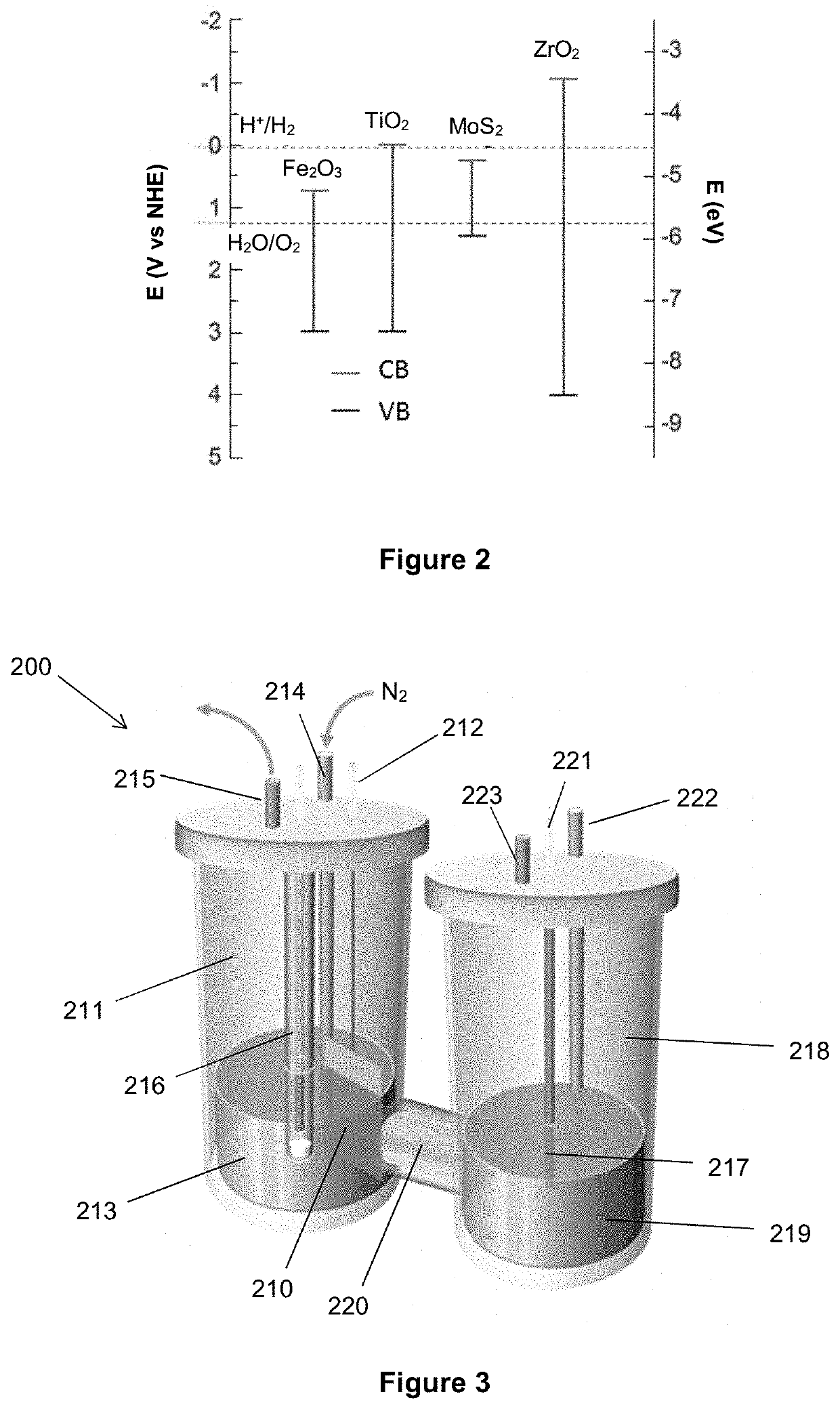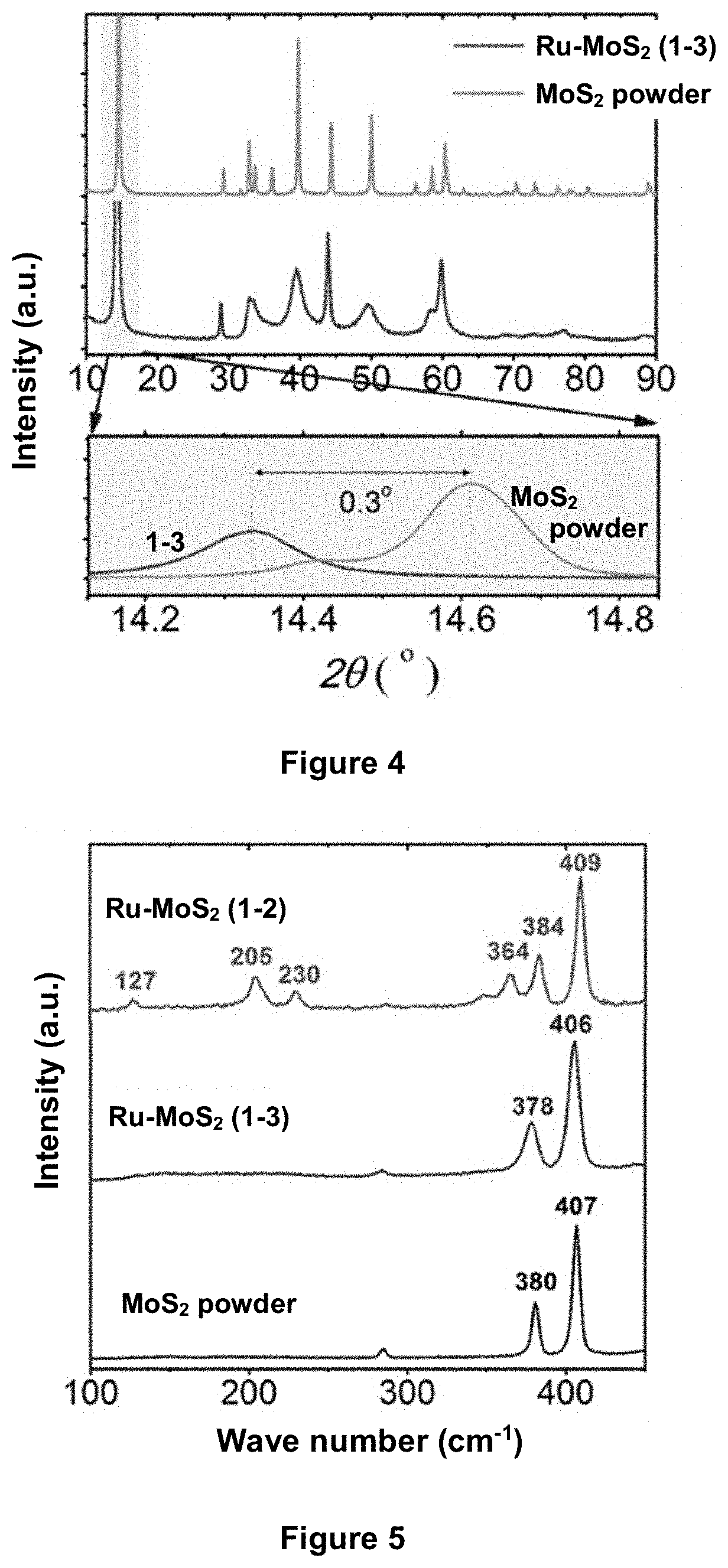An electrolytic composition and cathode for the nitrogen reduction reaction
a technology of electrolytic composition and nitrogen reduction reaction, which is applied in the direction of physical/chemical process catalysts, cell components, bulk chemical production, etc., can solve the problems of high faradaic efficiency, low nh/sub>yield rate, and low faradaic efficiency of many reported electrocatalysts, and achieve superior n2 selectivity and reduce dinitrogen
- Summary
- Abstract
- Description
- Claims
- Application Information
AI Technical Summary
Benefits of technology
Problems solved by technology
Method used
Image
Examples
example 1
[0166]MoS2 powder (1 g) was lithiated in 10 ml n-butyllithium for 72 hours under argon gas to produce Li—MoS2 (sample 1-1, see Table 2). This process is known to produce Li—MoS2 with the MoS2 layers in the 1T polymorphic phase (Wang et al, Nanoscale 2015, 7, 19764-19788). When Li—MoS2 is exposed to hydrolytic conditions, the lithium metal is known to exfoliate the MoS2 host. The exfoliated 1T polymorphic form thus formed is believed to be stable against reversion to 2H for the duration of short electrochemical experiments. Thus, when a suspension of sample 1-1 was dropcast onto a cathode and electrochemically evaluated in aqueous electrolytes (see examples 5 and 6), the resulting MoS2 material (designated sample 1-4 in Table 2) was believed to be exfoliated MoS2 at least partially in the 1T polymorphic form.
[0167]RuCl3 (60 mg) and Li—MoS2 (100 mg) were dispersed in 10 ml of anhydrous N-methylpyrollidone (NMP), and the mixture was transferred to a teflon-lined 20 mL autoclave. The au...
example 2
[0179]A mixture of sodium oleate, RuCl3 (1 mM) and FeCl3 (1 mM) in water was prepared. The Ru—Fe-oleate mixture was transferred to hexane, and then drop-cast onto carbon fibre paper (CFP). After removing the solvent by evaporation overnight, the Ru—Fe-oleate / CFP was placed in a tube furnace and calcined at 500° C. in Ar for 3 h. During the calcination, the Fe oxidised to form Fe2O3 initially, and the Ru was later reduced in situ when the oleate decomposed at high temperatures. The resultant Ru—Fe2O3 material, designated sample 2-1, was obtained and used as electrode for a nitrogen reduction reaction experiment, without adding a binder.
[0180]Control electrodes comprising only one of Ru nanoparticles or Fe2O3 were prepared by a similar methodology, with the intention of demonstrating the importance of the synergistic effect between catalytically active sites and semiconducting substrate. Thus an electrode of Ru nanoparticles on CFP, designated sample 2-2, was prepared using only RuCl3...
example 3
[0181]RuCl3 (10 mg) was dissolved in 20 mL DI water in the presence of TiO2 nanoparticles (100 mg). After sonicating and stirring for 30 min, 35% hydrazine solution (10 mL) was added dropwise. The mixture was stirred for another 2h before filtering the solids, washing with copious water and then drying at 60° C. under vacuum overnight to produce an Ru—TiO2 catalyst designated sample 3-1. It is expected that the Ru is present as metallic clusters in sample 3-1, and that the TiO2 is present exclusively in the rutile polymorphic phase.
PUM
| Property | Measurement | Unit |
|---|---|---|
| Percent by mass | aaaaa | aaaaa |
| Size | aaaaa | aaaaa |
| Electric potential / voltage | aaaaa | aaaaa |
Abstract
Description
Claims
Application Information
 Login to View More
Login to View More - R&D
- Intellectual Property
- Life Sciences
- Materials
- Tech Scout
- Unparalleled Data Quality
- Higher Quality Content
- 60% Fewer Hallucinations
Browse by: Latest US Patents, China's latest patents, Technical Efficacy Thesaurus, Application Domain, Technology Topic, Popular Technical Reports.
© 2025 PatSnap. All rights reserved.Legal|Privacy policy|Modern Slavery Act Transparency Statement|Sitemap|About US| Contact US: help@patsnap.com



